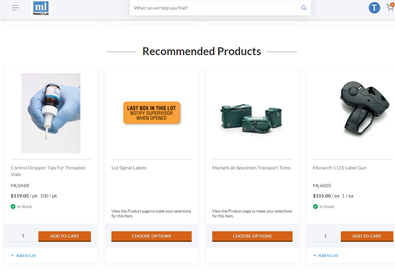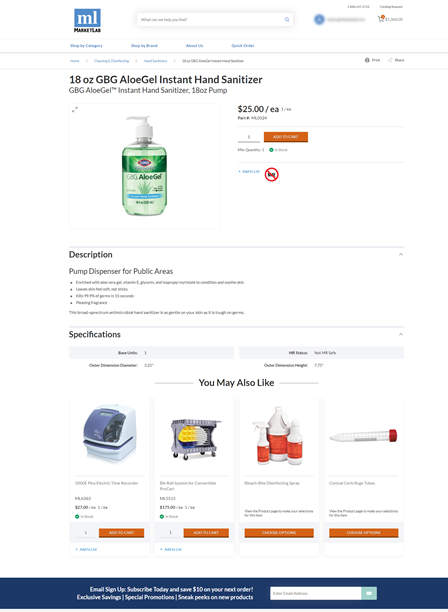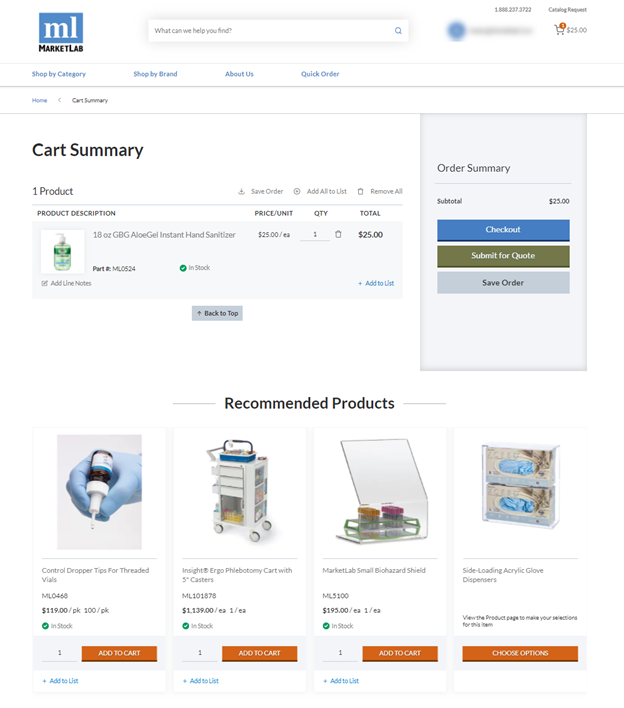If your 2022 digital strategy includes B2B personalization, think product recommenders. You can engage B2B buyers at different levels, and at the highest level, sometimes called macro-segmentation, you can personalize website experiences by serving up content, catalogs, or promotions for a whole group, like electrical supply buyers. At a deeper level, sometimes called micro-segmentation, you can personalize with further precision based on buyers’ ordering behaviors or their digital adoption. Both types of B2B personalization methods help to create better, faster experiences. But tailoring experiences to an individual can be especially powerful. It reassures users that you know their needs and can provide timely, relevant solutions to get their specific jobs done online. One individual personalization technology that is highly valuable to implement is a product recommendation tool.
Good product recommendation systems anticipate the needs of your buyers based on a few key strategies:
- Collecting data from the product catalog
- Collecting and tracking online behaviors in real time when buyers use the website
- Collecting data about previous buying behaviors and historical orders
- Collecting information from the visitor or user profile
- Applying algorithmic, machine learning, or AI-driven insights from buyers who shop like yours
- Applying merchandizing campaigns configured through administrative tooling
Ascent Brands, a multi-brand healthcare distributor, worked with Xngage to implement a product recommender on their websites and has already seen the benefit of using the technology. Hospital and home healthcare buyers enter an authenticated website that pulls in their previous purchases. The system selects categories and items that the buyer already purchased and serves these products up first, reducing the time spent searching for the products they need. This saves significant time during reordering.
Figure 1 - Recommendations on the Home Page

If the buyer is shopping a new category, recommendations come from product data, paired or related categories, and insights from other buyers who shop similarly.
Xngage implemented this technology using a widget on key website pages that are highly used by buyers, including: home, search results, category, product, and shopping cart pages. The data collected from these pages provides a more complete view of the customer journey and helps improve the product recommender each time that it is used.
Here’s how it could work on a product landing page:
- A buyer previously purchased safety or personal protective equipment (PPE) from the website
- If the buyer logs in, previously purchased products are served up (a reorder)
- If the buyer searches similar products in that category, recommendations will be served up based on a combination of other past purchases, like products, and best sellers (product recommender)
Figure 2 - Recommendations on the Product Page

Figure 3 - Recommendations on the Cart Page

The journey from search through cart in B2B is different than B2C. Product recommenders are connected to what’s important to buyers, and additional filters like “in-stock availability” or “customer part number” make the recommender even more valuable. And that ease of use, and frictionless experience for buyers who are short on time translates into higher trust and loyalty to your website. When you are the go-to solution for B2B buyers, they will see value in the product recommender as part of a digitally assisted sale.